Painting by numbers tips and tricks
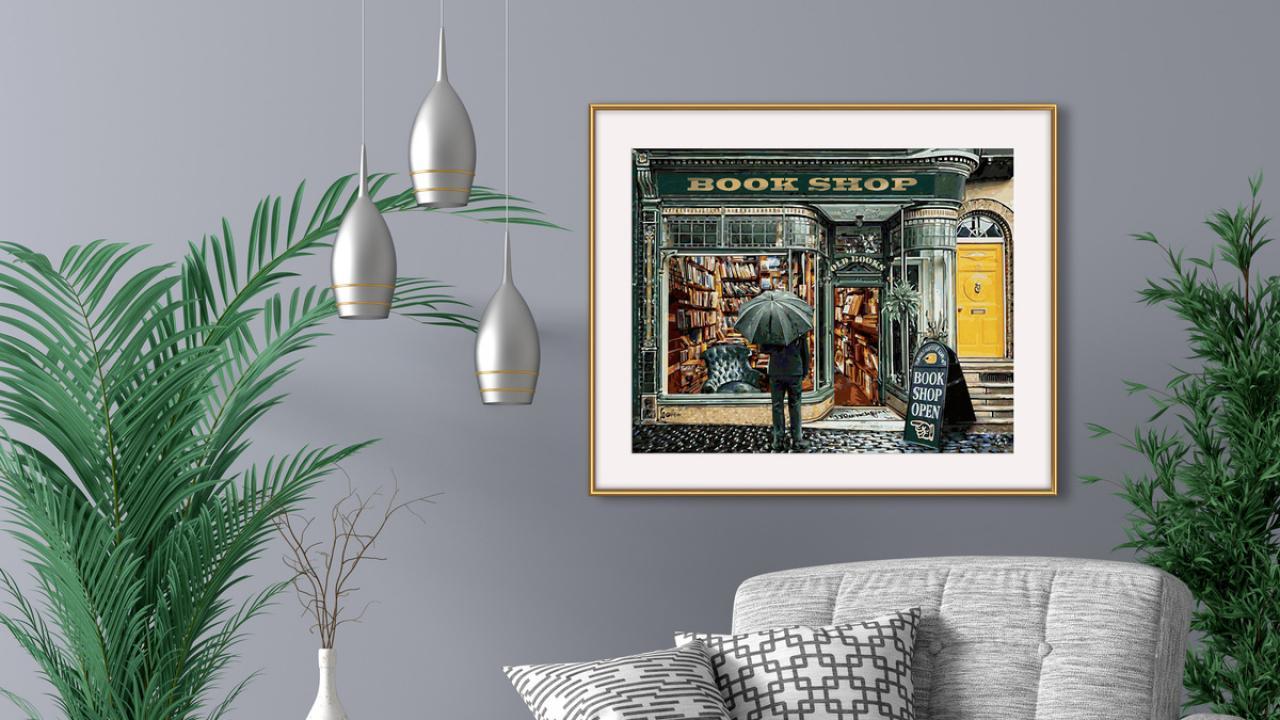
-
By
Lisa B.
Painting by numbers combines pure creativity and enthusiasm for painting with a simple, easy-to-understand system that allows anyone to become an artist. The simple principle enables a relaxing immersion into the colorful world of painting and enjoys great popularity for good reason. Despite the fundamental simplicity of painting by numbers, there are a number of tricks and tips that you should know in order to exploit your full artistic potential and achieve optimum results. This article provides you with the most important painting by number tips - from buying and preparing to the painting process and the perfect presentation of your artwork.
Ready to start painting by numbers? Things to know before you buy
Before you can grab a paintbrush, you'll first need to get a paint-by-numbers set. Even at this stage, there are a few things you should definitely consider in order to make the best individual purchase decision.
Choosing the right painting by numbers picture
If you've already browsed through our range, you'll know: The selection of different paint by number motifs is huge. Ideally, you should take enough time to look at the various categories and get an overview. You can narrow down the products in question by keeping the following aspects in mind:
Desired motif
Which motif are you particularly interested in? These could be animals, landscapes, abstract motifs or fantasy images.
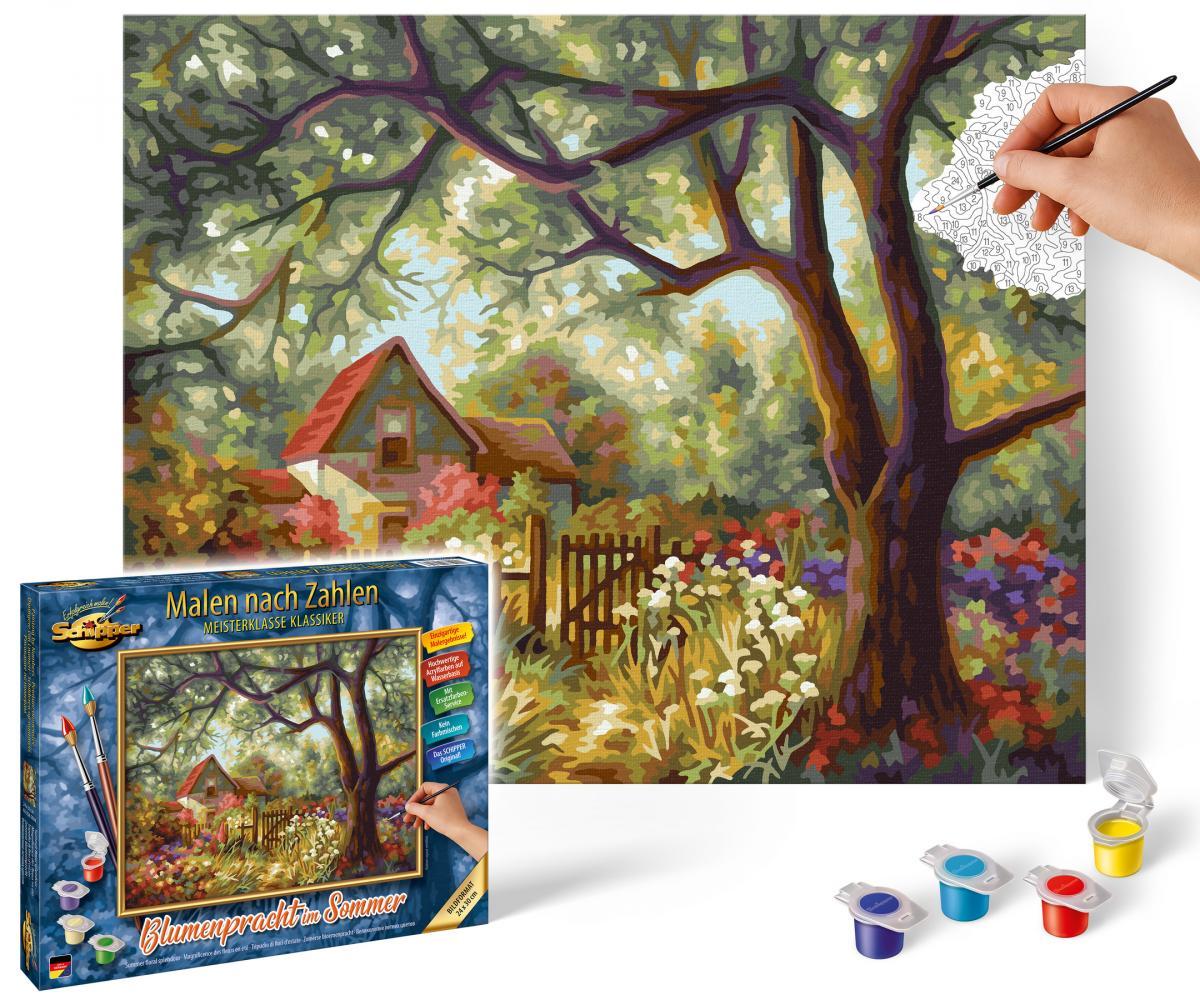
Size and subsequent placement
Where should the finished picture be placed? Depending on the desired placement, different picture sizes are available. At Schipper, you'll find motifs in these sizes:
- MASTERCLASS Premium: 40 cm x 50 cm
- MASTER CLASS portrait/width format: 40 cm x 80 cm
- MASTER CLASS classic: 24 cm x 30 cm
- MASTER CLASS Quattro: 4 parts à 18 cm x 24 cm
- MASTER CLASS Triptych: 50 cm x 80 cm / 40 cm x 120 cm
- MASTER CLASS Polyptych: 132 cm x 72 cm
Experience and skills
Are you painting by numbers for the first time or do you already have some experience? Your skills will determine how challenging the motif of your choice can be. Multi-part pictures and motifs with many small areas, for example, are much more challenging than single-part, rather large-scale motifs.
Scope
Are you looking for a complete set including frame or is a product kit with the absolute basics enough for you? You can usually find out exactly what is included in a set from the product description.
Also think about useful accessories that you may need in addition to your favorite set. For example, if you have decided on a motif with very small fields, our painting by numbers tip is: Get yourself a magnifying glass. Are you still missing a finishing varnish to give your painting the finishing touch? You can discover high-quality accessories from Schipper by clicking on the link.
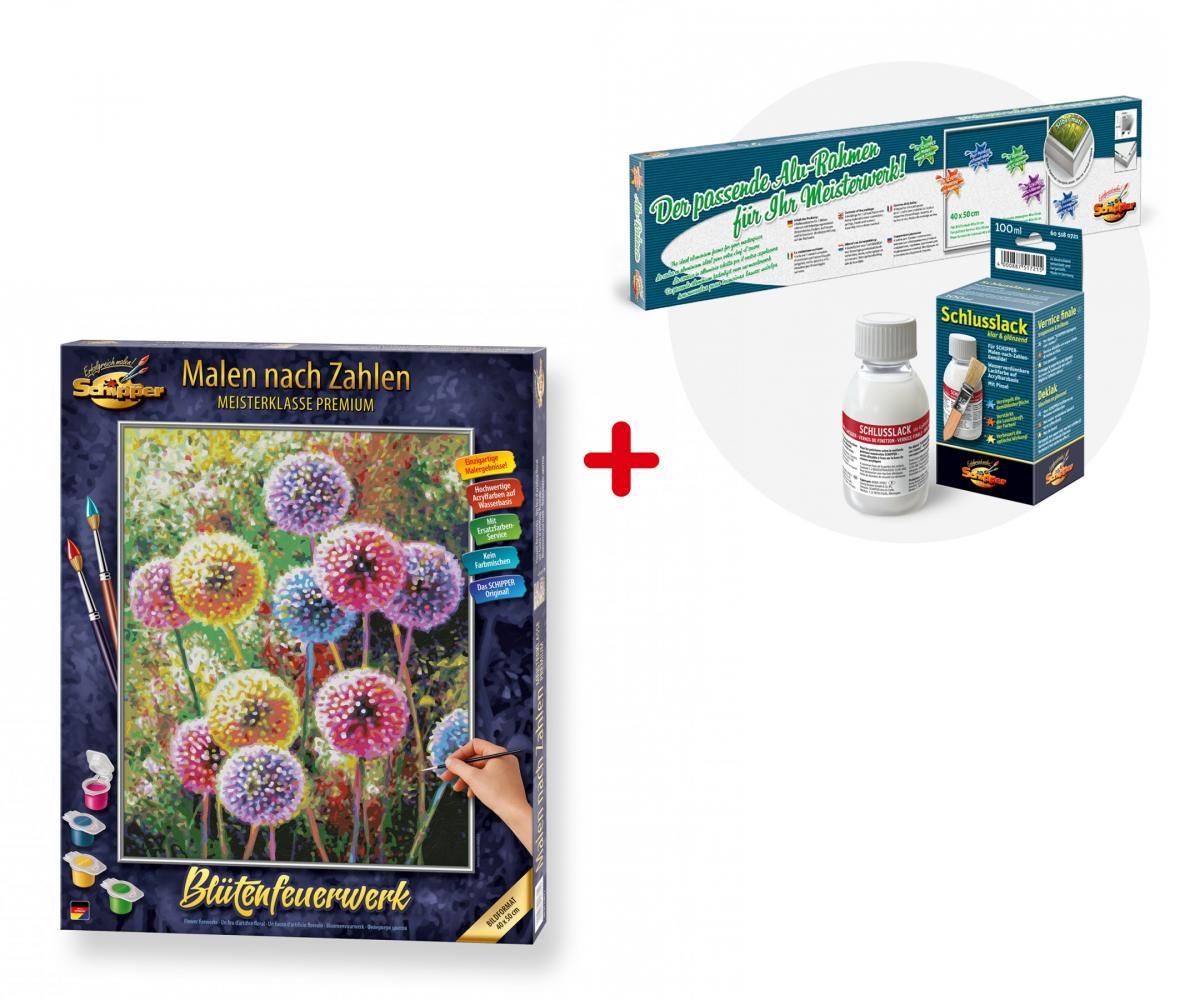
Painting by numbers quality
The undisputed most important criterion when choosing a painting set is quality. If the paints, brushes and painting templates are not of high quality, this will have a negative impact on your painting experience and ultimately on the finished picture. Perhaps one of the most important painting by numbers tips is therefore: Finger away from inferior products!
You can get an impression of the quality of a product with the help of product reviews, for example. The price can also be an indication: Good paint by numbers products don't have to be outrageously expensive, but you can't usually expect satisfactory quality from very cheap offers.

Before you start painting: Your paint-by-numbers check
Have you found a great motif and can hardly wait to start painting? Wonderful! Despite all the anticipation, take a few minutes and go through our check full of paint-by-numbers tips and tricks - so you'll be well prepared for the fun of painting.
Setting up the painting station
First, you need to set up your creative area with the help of our painting by numbers tips . In principle, any well-lit place where you can spread out your materials and work in peace is suitable for painting. If you're working with strong-smelling paints, it's also a good idea to have a place where you can air out the room.
If you have an easel, you can of course set it up, but otherwise a hard, even surface will do just fine. Grab a comfortable chair and cover the painting surface with (newspaper) paper or plastic protection so that paint splashes can't damage it. As you should not only keep the surface you are painting on free of paint splashes, but also your hands, make sure you have a few cloths ready to wipe and a bowl of water. You will also need a second cup of water and another cloth for your brushes.
Prepare the canvas, brushes and paints
Are you ready? Then the next step is to pick up your paint by number set and take out the materials. We can also help you with this with our paint by number tips.
Place the paint pots and brushes neatly and within easy reach right from the start. For example, you can arrange the colors in ascending or descending order by number or by the brightness of the color shade so that you don't have to search for the right pot for an unnecessarily long time later. Be sure to take the numbering of the paint pots into account and look at the corresponding description on the control sheet. This explains the numbering system of the paint pots in detail. It is important to note that each paint set has its own specific numbering (If paint pots have the same number, these are to be understood as replacement colors). Correct assignment of the colors to the painting template is therefore crucial to avoid unwanted color deviations and to achieve an optimal painting result. This allows you to keep an overview at all times and ensure that your artwork is exactly how you want it to be.
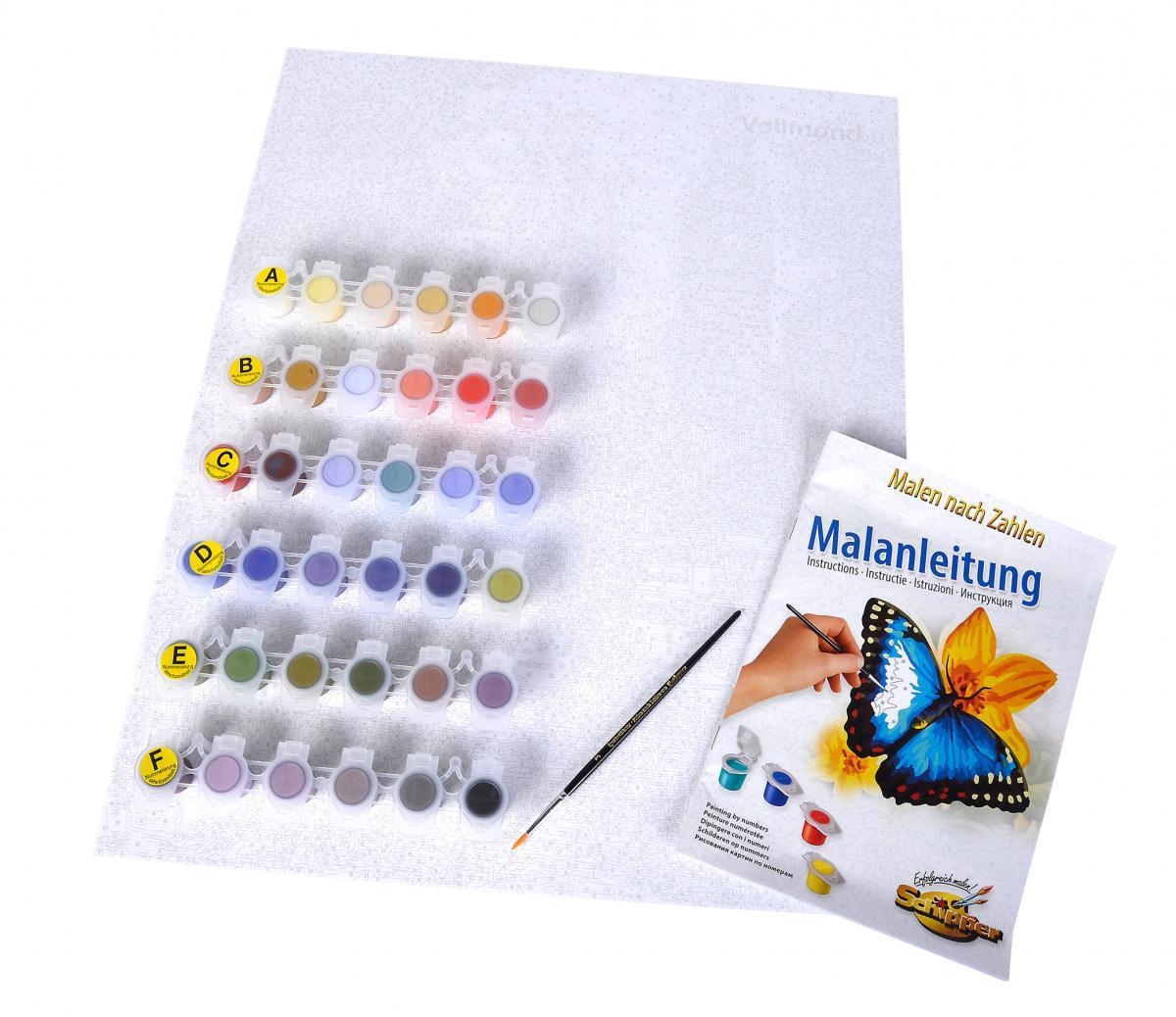
Also take a few minutes to check the viscosity of the paints. You can simply use a match for this, which you first dip into the paint. When you then pull it out again, a drop will form and fall back into the pot. Now observe whether the drop rejoins the rest of the paint immediately or remains visible for a long time. If the latter is the case, this is a clear indication that the paint is too thick. Then stir in a little water, drop by drop, to achieve the ideal consistency. But be careful: test the viscosity again after each drop so that you don't accidentally dilute the paint too much and take away its opacity.
If your brushes are not 100% clean, now is the time to clean them thoroughly because you can't paint accurately with sticky or dried brushes. If you are still looking for suitable brushes for your acrylic painting, the Schipper special brush set is a good choice. In addition, our dotting pens have proven to be a helpful tool.
One of our painting by numbers tips for saving time: While you let the brushes soak, you can take care of the canvas. Make sure you stretch it properly onto the stretcher frame before you start painting. This step is not necessary with Schipper products, as we have deliberately opted for cardboard. This does not need to be stretched, which means you can paint on it more quickly. Canvases can sometimes wrinkle. This is of course annoying. But our paint by number tips can also help with this problem: lay the canvas on a flat surface with the reverse side facing upwards, spread a slightly damp cloth over it and apply a little pressure with the iron. This procedure will give you a smoothed, wrinkle-free canvas on which your painting can be shown to its best advantage.
Considerations before painting
The preparations for your painting fun with paint by numbers are in the final stages! Finally, take your time to look at the color codes and take a close look at the instructions. This will once again explain to you exactly how painting by numbers works so that you can start painting fully informed.
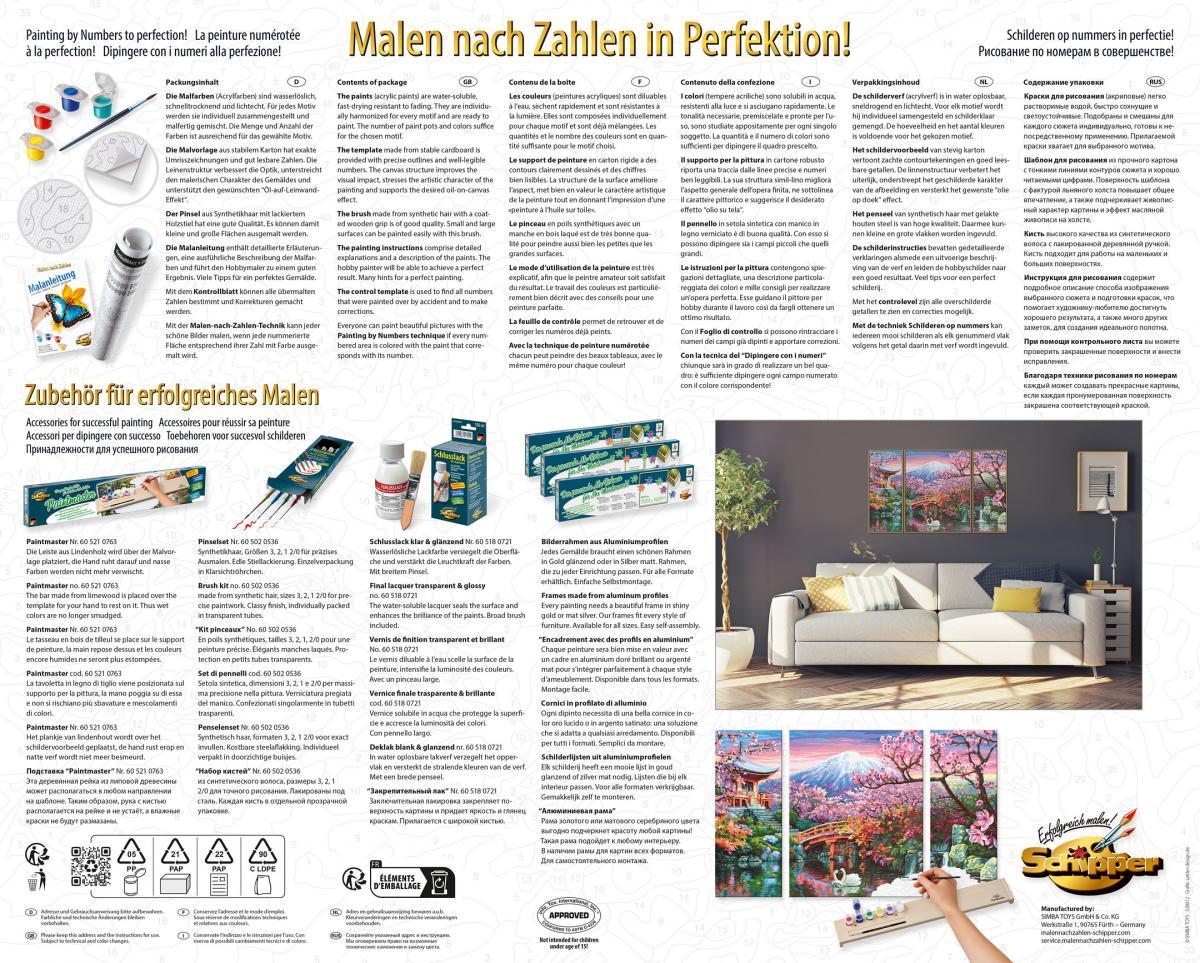
In addition, take a close look at the painting template and focus your attention on the numbers. Are they clearly recognizable? If they are too small for your naked eye, a simple paint-by-numbers trick is to get a magnifying glass to avoid confusing similar numbers due to their small size. After all, you shouldn't have to guess, but should be able to clearly recognize which numbers are in the fields.
From the first to the last brushstroke: painting by numbers tricks
Our painting by numbers tips are going into the round you've probably been waiting for: We'll focus on the painting process. Of course, we also provide you with lots of practical tricks for this.
General tips
In order to work in a structured way and to prevent paint pots from drying out after being open for too long, you should color in the fields number by number. This means: Do not fill in the squares crosswise, but first fill in all the squares of a number before continuing with the next number. When you have finished with a number, close the pot and make sure that the lid is really firmly in place. Also make sure you clean your brush whenever you change colors and use the colors sparingly. The Schipper paints cover excellently, so small amounts are enough and you don't need a thick layer of paint.
From large to small & dark to light
It's best to always start with the large areas and then gradually move on to the smaller details. In this way, you will make rapid progress and quickly get an initial feel for what the finished picture will look like. In terms of color tones, you should start with the darkest color and then work your way to the lightest tone by tone. Why? It's easy to explain: the darker shades allow you to recognize the basic features of the picture at an early stage and assess the colour ratio of light and dark. These two painting by number tips will increase your chances of staying motivated and achieving a harmonious end result.
First approach
If you have no experience with painting by numbers and are unsure - for example, about the consistency of the colors or the thickness of the brush - it is advisable to paint a small area first. And we have another paint by number tip for you in this case: Use a blank sheet of paper to test the colors before you paint on the canvas or cardboard.
Tips for painting like an artist
Would you like to paint like a real artist?Then don't miss out on the following paint by number tips for outstanding results!
In order to paint the fields as precisely as possible, you should only ever dip the tip of the brush - and not the entire length of the hair - in paint. For smaller details, you can use finer brushes or even a toothpick. In addition, one of the best-known paint by number tips is to Always outline the fields first, then fill them in.
If very bright colors belong to your motif, it may be possible that the number imprint remains visible through the paint. In this case, it is necessary to apply several layers of paint to achieve sufficient opacity. You can also paint over the numbers in advance with a white crayon - a little paint by number tip with a big effect.
Your artwork will look particularly authentic and impressive if you paint beyond the edge of the canvas. If you don't do this, a clear edge will appear, which can make the painting look "unfinished" from some angles. So don't be afraid to go beyond the edge with the paint.
If you ever need to correct a painting by number mistake, we also have painting by number tricks for this.
If you make a mistake, it is important that you wait until the paint has dried before correcting it. Wet colors smudge and cannot be painted over. Only when everything is nice and dry can you touch up your mistake. Another practical tip: You can also dab a little nail polish remover on acrylic paints to carefully remove unwanted stains.
Tips for long-lasting painting fun
To get the most enjoyment out of painting by numbers, a few conditions must be met. First and foremost, you should take regular breaks. This allows your hands to rest and your eyes to relax. You will notice that after a short break, you can get back to work with fresh energy and enjoy the painting process even more. Although many hobby painters like to paint alone and appreciate the peace and quiet, it can be nice to have company for a change. So if you're the kind of person who enjoys socializing with others, it's a great idea to arrange to paint together - no more boredom!
We have an extra tip for you: Photograph your artwork as it's being created. By taking a photo after each "painting session", you can see how your painting was created "field by field" and never lose sight of your progress.
From canvas to gallery: After painting
You have filled the last field and proudly hold your very own personal masterpiece in your hands - a great feeling! What happens next is revealed in our painting by numbers tips for after you've finished painting.
What happens to the picture?
Have you thought about how you want to display your finished work of art? You can frame the picture and present it in the best light. To protect it and keep it in good condition for as long as possible, you can seal it with clear varnish beforehand. Important: Only hang up your picture when it is completely dry - otherwise you risk smudging the paint and damaging the motif "in the last few meters". Once dry, sealed and framed, your self-painted painting is now just waiting to be shown to family and friends.
What happens to the materials?
After painting is before painting! So that you can tackle a new painting project at any time, you should always clean your brushes immediately after painting. This way, they are ready for use when you move on to your next work of art. You can keep any leftover paint tightly closed and use it again later. However, please note that most paints do not last forever and their quality may deteriorate over time. Paints and other materials that you no longer have any use for must of course be disposed of in an environmentally friendly manner.
What happens to you?
Your painting is hanging, the brushes have been cleaned, all materials are neatly stowed away - and now? Now is exactly the right moment to take a look back and review the painting process. What did you achieve perfectly? Which steps did you find particularly challenging? What mistakes did you make that you could perhaps avoid in the future? Reflecting on your painting process will help you to recognize development potential and get a little better with each painting.
What's missing is the last of our painting by numbers tips: In the course of your considerations, think about which paint by number motif you would like to add color to next. After all, the selection is large and there is a colorful abundance of creative motifs - you're spoiled for choice!
Conclusion: Paint by number tips - put down your brush and look back
Our paint by number tips accompany you from the selection of a product and preparation through the painting process to the time after painting. They are designed to help you enjoy painting by numbers even more - and in the end, you'll have impressive paintings to top off the fun.
Try out our painting by number tricks for yourself. If you still need a suitable motif for this, you are cordially invited to take a look around our homepage. The exciting Schipper theme worlds await you there with a diverse selection of motifs to suit every taste - in first-class paint by numbers quality, of course!


















